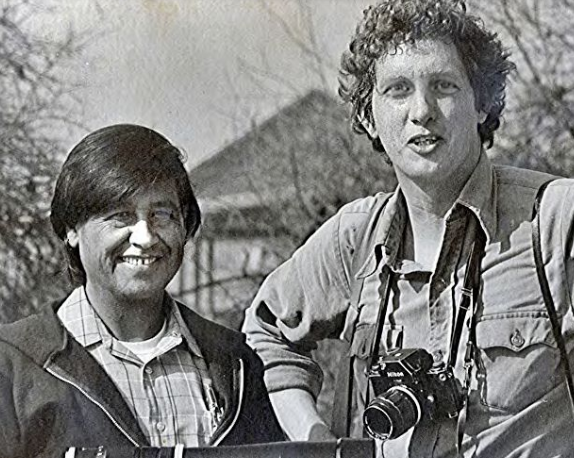By Lynn Burnett
Born in 1939, Bob Fitch was the son of a conservative Christian minister. He experienced his family as cold and emotionally withdrawn, and as a teenager gravitated towards the warmth and vibrance of Berkeley’s social justice scene. During that time, he tossed aside what he viewed as his father’s rigid belief system… but went on to pursue a Master’s of Divinity, according to his own understanding of a Jesus whose teachings centered on feeding the poor, housing the unsheltered, and giving company to the isolated.
Bob Fitch began his career as a minister at the famed Glide Memorial Church in San Francisco, with a focus on supporting the homeless population and people suffering from addiction. Many were LGBT refugees who had been ostracized and abandoned by their families and communities, and had fallen into severe isolation and despair. The church had begun publishing books about the inequities in San Francisco, and asked Bob to take pictures during his time ministering to people on the street. He took the task to heart, and began studying the works of famous photographers in order to visually portray the inequities Jesus had preached against.
In 1963, Bob had a vision: “I had read James Baldwin’s The Fire Next Time straight through one night and early morning. At the end of that reading I was entranced; I had a vision of myself being engaged with what I had encountered in the book in some sort of aesthetic manner.” Soon afterwards, he was invited by Martin Luther King’s organization, the Southern Christian Leadership Conference, to become a movement photographer. They needed a photojournalist, not only to take pictures of big movement events, but to embed themselves in the daily grassroots movement building and portray the daily work of the movement. And, given the extreme threats Black journalists faced, they needed the photojournalist to be White. For Bob Fitch, it was the fulfillment of the vision he had had while reading Baldwin through the night. Along the way, he also ended up becoming Martin Luther King’s official photographer: many of the most famous pictures of King were taken by Fitch. Bob became a deeply trusted figure: he was often the only White person present during some of the civil rights movement’s most emotional internal debates.
After King’s death, Bob felt uneasy about growing tensions within the movement. During an angry civil rights retreat, he left the meeting and went to meditate in the forest, where he experienced a vision of Martin Luther King urging him not to walk away from the work. Fitch wanted to remain committed to documenting powerful nonviolent movements driven by ordinary people. He relocated to Delano, California, and became a photojournalist for the United Farm Workers, where for years he captured evocative images of everything from life in the fields to strategy sessions to police brutality against workers on strike. The official U.S. postage stamp of Cesar Chavez is based on a photo taken by Fitch. For Bob, photography was both a spiritual experience of being present, in the moment, allowing himself to be guided by intuition; as well as a spiritual commitment to justice. He passed away in the farming community of Watsonville in 2016.
Additional Resources
Ruth Copland: Do We Still Need Physical Community? Arts Interview: Bob Fitch, Iconic Photographer and Photo-Journalist.
Bob Fitch:
Sam Roberts: Bob Fitch, Photojournalist of Civil Rights Era, Dies at 76.
Waging Nonviolence: On the civil rights trail with Bob Fitch.
Wikipedia entry.
